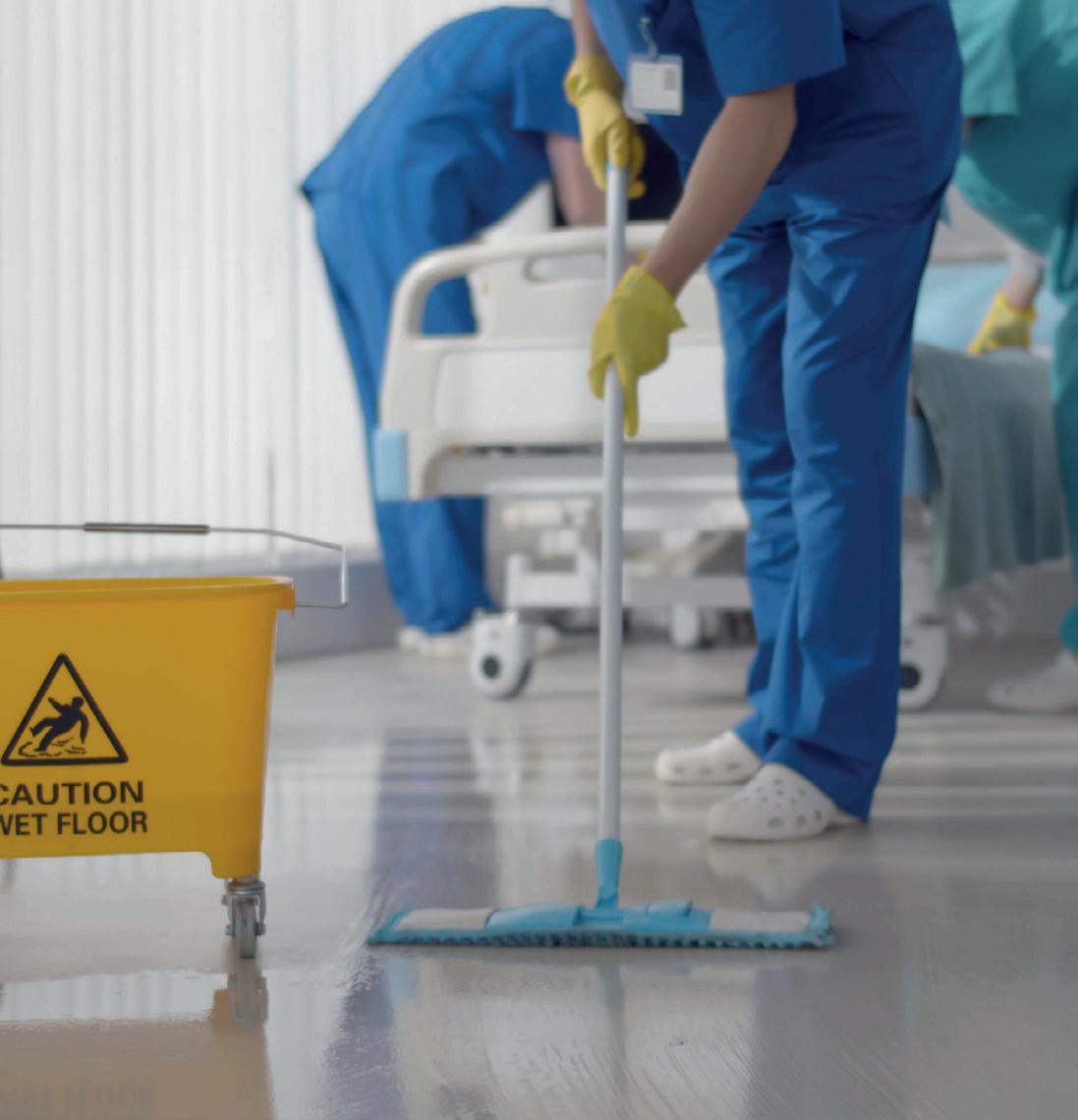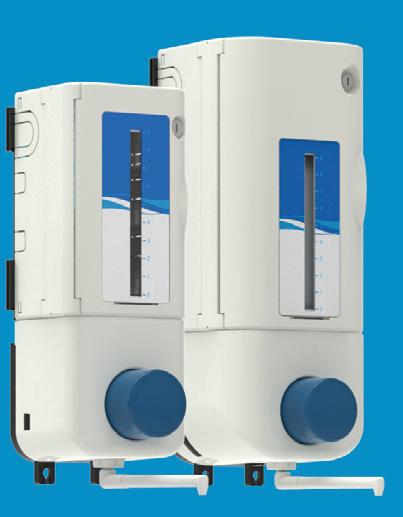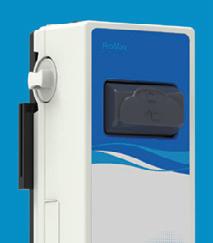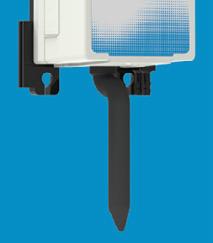
3 minute read
How healthcare providers prevent infection
The spread of infection in the healthcare sector is an ongoing challenge for operators, so what can providers do to minimise risk and protect patients, staff and visitors?
Within healthcare settings such as hospitals and care homes, MRSA and Clostridium difficile are among the most common infections and an outbreak can place additional strain on stretched staff and resources.
It’s clear, therefore, that proper surface cleaning and disinfection routines are key to controlling infection with a starting point being high-touch surfaces that can harbour bacteria.
While the scale of surface cleaning differs between low-risk (foyers, waiting rooms, offices and corridors) and high-risk (operating theatres and intensive care wards) areas, it’s vital that cleaning program managers do not become complacent.
Many healthcare providers have identified the need to educate staff at every level — not only those responsible for cleaning — of the importance of hand hygiene and to raise awareness of infection control.
That’s because seemingly innocuous equipment shared by staff such as keyboards, stethoscopes and ultrasound probes cannot be underestimated as they are a major cause of cross contamination and should all be wiped down regularly with disinfectant. The same is true of chair arms and seats in waiting areas.
Meanwhile, call bells, grab rails, door handles and opening buttons/panels are touched countless times each day and are among the most likely surfaces to transmit infection.
And in all toilet areas, from wards to public washrooms, it’s essential that high-touch surfaces including taps, flush handles, dispensers, hand dryers and door handles are not neglected due to a focus on obvious areas such as toilet bowls, sinks and floors.
Despite the site operator’s responsibility for overall management of on-site hygiene, it’s important to remind staff, patients, visitors and contractors to take ownership of their wellbeing.
As well as installing and regularly filling soap, towel and sanitiser dispensers, managers should display positive messaging to reinforce the serious consequences of infection on healthcare provision and encourage use of hand hygiene systems.
Of course, dispensers themselves can harbour bacteria as they are always touched when hands are dirty, and as well as installing automatic touch-free systems operators can ensure janitors regularly wipe these down as part of their cleaning routine.
On this subject, cleaners are a vital part of the overall healthcare team and, at a time when janitorial staff retention is notoriously difficult, facilities and services managers should empower them and give them proper tools for the job.
For example, dispensers should be quick and easy to refill, with simple features such as viewing windows for a quick product level check making a big difference.
Managers can also make use of IoT technology to assist cleaning staff, especially those working on larger hospital sites for whom walking between hand sanitiser dispensers only to find that the systems are still full may be monotonous and dispiriting. The latest internet-connected systems can display remaining product level for multiple dispensers via an online portal or smart device app, meaning personnel are able to ensure dispensers are full at all times and do not need to be reminded to refill. Not only does this increase efficiency and ensure hand hygiene solutions are always available, the janitor is empowered and feels a greater sense of value in their job.
SEKO is trusted worldwide for its professional cleaning and hygiene equipment and supplies the global healthcare sector with a wide range of infection-control systems including soap, paper and sanitiser dispensers, chemical dilution systems and spray stations.






Eight to nine people die by suicide every day. Latest data released from the Australian Bureau of Statistics (ABS) has revealed 3144 Australians died by suicide in 2021, compared to 3139 in 2020.
There were 2358 male suicides (18.2 deaths per 100,000) and 786 female suicide deaths (6.1 per 100,000). Suicide was the 15th leading cause of death overall in 2021. Suicide was the most common cause of death for young people aged 15–24 years. In 2021, 219 Aboriginal and Torres Strait Islander people died by suicide.
Suicide Prevention Australia CEO Nieves Murray said, “Suicide rates remained stubbornly high in 2021. One death by suicide is one too many and more needs to be done to turn the trend towards zero.
“Data is incredibly important in suicide prevention. It helps inform how we approach suicide prevention and influences service and program delivery. Access to causes of death data is part of the picture, but we also need more timely data on suicide attempts to better understand and respond to distress in our communities.
Key statistics:
• The median age of death by suicide was 44.8 years.
• The suicide rate for males decreased by 2.3% and the suicide rate for females increased by 5%. Consistent with previous years, males are around three times more likely to die by suicide than females.
• The median age of death by suicide of Aboriginal and Torres Strait Islander peoples was 30.2 years, more than a









